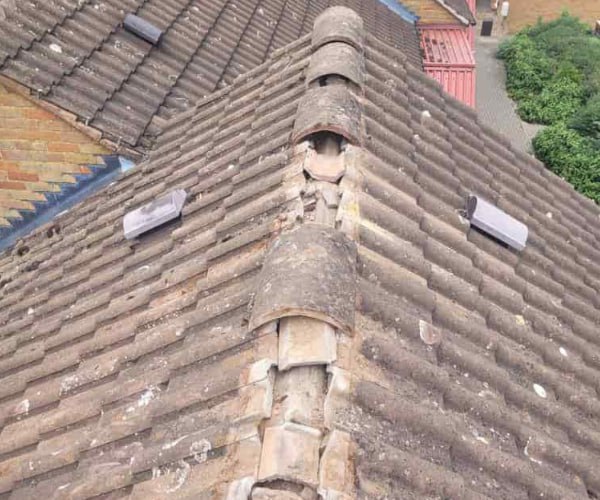What Are the Most Common Causes of Roof Failure?
Your roof is one of the most vital parts of your property’s structure, protecting your home from wind, rain, and the elements. Yet, despite its importance, roof failure remains a common issue for many homeowners. Understanding why roofs fail can help prevent costly damage and extend the lifespan of your roofing system. LKN Roofing Shortstown works with homeowners across Shortstown, Bedfordshire, providing professional roof inspections, repairs, and maintenance designed to prevent premature roof failure and ensure long-term durability.
Understanding Roof Failure
Roof failure occurs when a roofing system can no longer perform its primary function — keeping your home watertight and structurally sound. It doesn’t always happen suddenly; often, it develops gradually through wear, neglect, or improper installation. Recognising the causes early allows homeowners to act before issues become serious and expensive to fix.
Below are some of the most common causes of roof failure that every homeowner should be aware of.
1. Poor Installation or Workmanship
One of the leading causes of premature roof failure is poor installation. Even the highest-quality materials can fail if not fitted correctly. Common mistakes include improper alignment of tiles or slates, insufficient underlay, incorrectly sealed flashing, and inadequate ventilation.
A poorly installed roof is more prone to leaks, structural shifting, and weather-related damage. That’s why it’s essential to choose experienced roofing professionals such as LKN Roofing Shortstown, who understand both traditional and modern roofing techniques and ensure every project meets the highest standards.
2. Lack of Regular Maintenance
Many homeowners overlook routine maintenance, assuming a roof will last for decades without attention. In reality, small issues like cracked tiles, blocked gutters, or worn flashing can quickly escalate if not addressed. Regular maintenance helps identify and correct these problems early, preventing more extensive damage over time.
Simple maintenance measures that can prevent failure include:
- Inspecting tiles or slates for cracks or displacement.
- Clearing gutters and downpipes to maintain proper drainage.
- Checking flashing and seals around chimneys and skylights.
- Removing debris and moss that can trap moisture.
LKN Roofing Shortstown recommends routine roof inspections to ensure every part of your roof remains in good condition throughout the year.
3. Weather and Environmental Exposure
The British climate can be harsh on roofing systems. High winds, heavy rain, frost, and temperature fluctuations all contribute to gradual wear and tear. Over time, UV exposure from sunlight can cause certain materials — especially felt and bitumen — to become brittle, while repeated freezing and thawing cycles can lead to cracks or loosened tiles.
In areas like Shortstown, Bedfordshire, where weather conditions can vary dramatically throughout the seasons, roofs face constant stress. Without regular checks and maintenance, these environmental factors can eventually cause leaks, structural weakening, or tile slippage.
4. Poor Ventilation and Condensation Issues
Ventilation plays a crucial role in maintaining a healthy roofing system. When air cannot circulate properly in the loft or attic space, condensation builds up, leading to dampness, mould, and timber decay. Over time, this trapped moisture can weaken the roof’s structure from within.
Common ventilation problems include blocked soffit vents, insufficient ridge vents, or poorly installed insulation that restricts airflow. To prevent this, homeowners should ensure proper air circulation throughout the roof space, particularly during colder months. LKN Roofing Shortstown can inspect and adjust ventilation systems to prevent condensation-related damage.
5. Age and Natural Deterioration
Every roof has a natural lifespan, depending on the materials used and the quality of installation. Over the years, exposure to the elements causes gradual deterioration — tiles may lose their protective coating, mortar joints may crumble, and sealants may harden and crack.
Once a roof nears the end of its life, small repairs may no longer be sufficient. Signs that your roof is ageing include:
- Frequent leaks or damp patches appearing indoors.
- Increased moss or algae growth.
- Loose, cracked, or missing tiles.
- Sagging or uneven rooflines.
If your roof is over two or three decades old, it’s wise to have it professionally inspected to determine whether a full replacement or targeted restoration is required.
6. Faulty Flashing or Poor Detailing
Flashing is the thin material — often lead or modern alternatives — used to seal joints around chimneys, skylights, valleys, and walls. If flashing is poorly installed or damaged, water can easily find its way beneath the roof covering.
Even minor defects in flashing can cause significant leaks over time. As part of a regular roof inspection, flashing should always be checked for cracks, corrosion, or detachment to ensure your roof remains watertight.
7. Impact Damage from Trees or Debris
Branches, overhanging trees, and flying debris during storms can all cause direct physical damage to a roof. Even small branches brushing against tiles can cause chips or cracks over time. Falling limbs can puncture the roof surface or dislodge multiple tiles in one impact.
To prevent this type of damage, keep nearby trees trimmed and clear any debris after high winds. LKN Roofing Shortstown provides emergency repair services across Shortstown, Bedfordshire, for properties affected by storm or impact damage.
8. Inadequate Drainage or Standing Water
Flat roofs and low-pitched roofs are especially vulnerable to water pooling. If a roof isn’t designed or maintained with proper drainage, standing water can lead to leaks, surface erosion, and structural weakening.
Regularly inspecting drainage outlets and ensuring guttering systems are free of blockages is key to preventing this. Over time, small drainage issues can lead to extensive water damage if ignored.
9. Incorrect Materials for the Roof Type
Using materials unsuited to the roof structure or local climate can significantly shorten its lifespan. For example, lightweight tiles may not withstand high winds, while certain felts may degrade faster under direct sunlight. Every roof requires materials tailored to its slope, design, and regional weather conditions.
LKN Roofing Shortstown ensures every installation across Shortstown, Bedfordshire, uses materials that match the property’s structural requirements and environmental exposure.
How to Prevent Roof Failure
Prevention starts with awareness and action. Homeowners can protect their roofs through:
- Routine inspections by professional roofers.
- Timely repairs when small issues arise.
- Proper attic ventilation to prevent moisture build-up.
- Cleaning gutters to maintain good water flow.
- Monitoring roof age and planning ahead for replacement.
By following these best practices, you can significantly extend your roof’s lifespan and maintain your home’s overall safety and energy efficiency.
Conclusion
Roof failure rarely happens overnight — it’s usually the result of years of neglect, poor installation, or environmental wear. By understanding the most common causes and taking preventative action, you can avoid costly damage and ensure your roof remains strong and watertight for years to come.
LKN Roofing Shortstown offers expert roof maintenance, repairs, and inspections throughout Shortstown, Bedfordshire. With professional care, quality materials, and years of experience, we help homeowners maintain durable, weather-resistant roofs that stand the test of time.
Call us on: 01234 860 695
Click here to find out more about LKN Roofing Shortstown
Click here to complete our contact form and see how we can help with your roofing needs.

